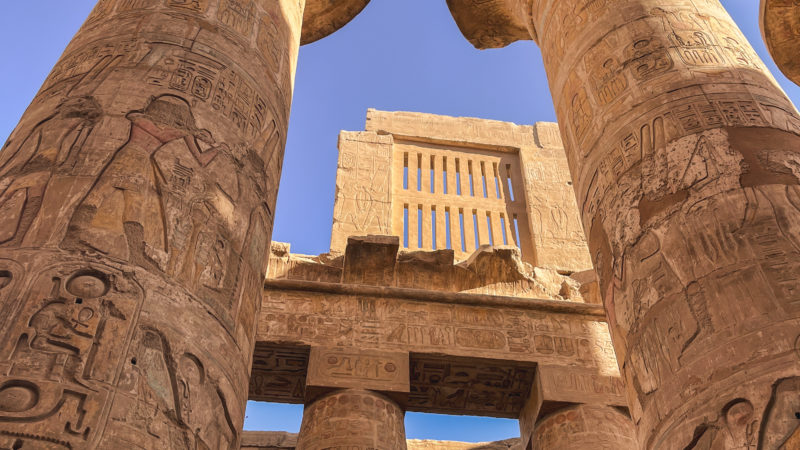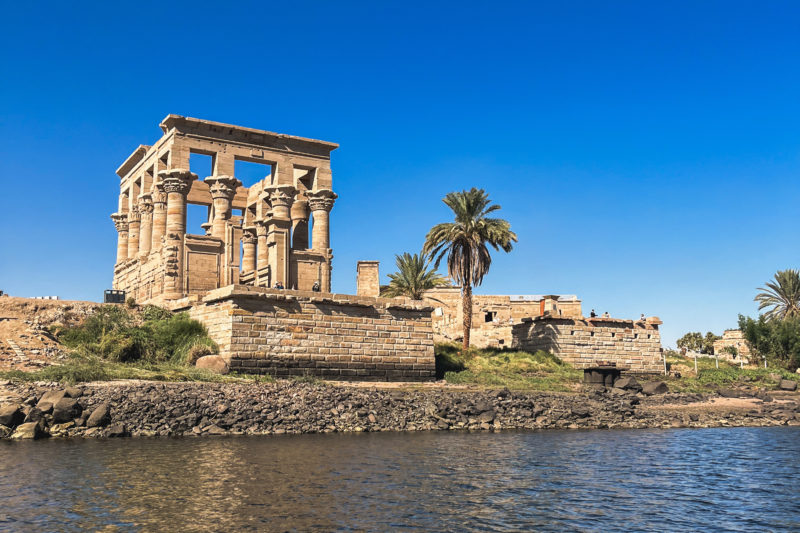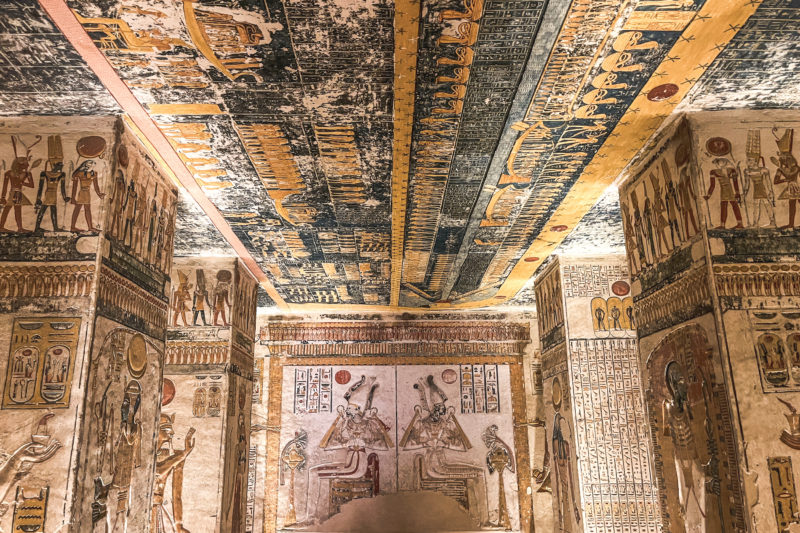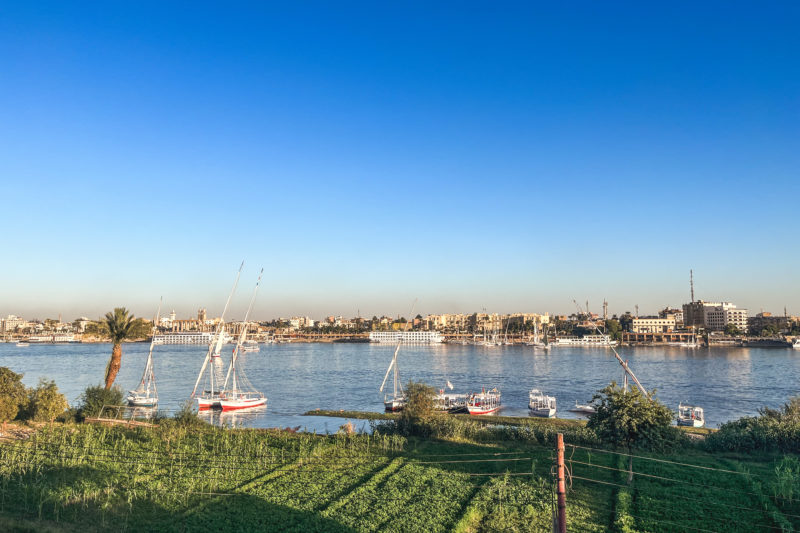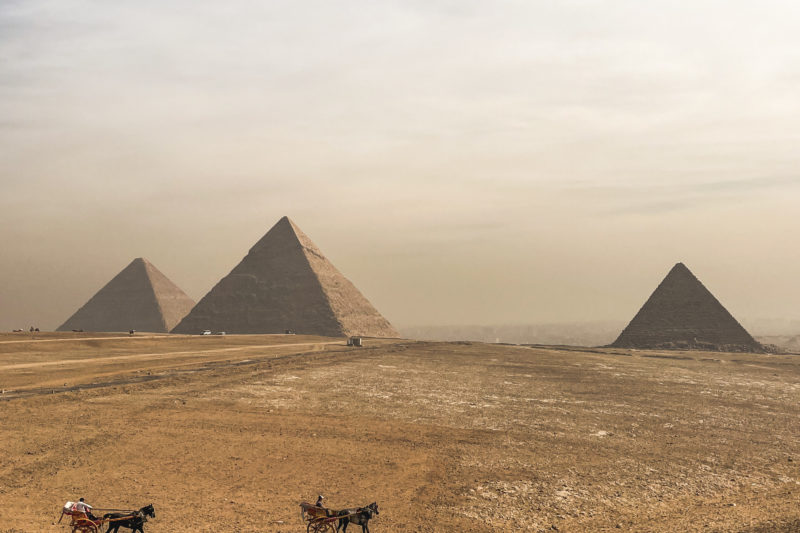After wandering through the marvels of the West Bank, the next day we set our sights on Luxor’s East Bank. A different face of the city unfolded before us; bustling, vibrant, and undeniably chaotic, yet every bit as rich in history.
There, between blaring tuk-tuks and the pulse of city life, the ancient remnants of temples still rise – monumental structures that have withstood the passing of millennia. It was another kind of immersion into ancient Egypt, right under the open sky.
We began our East Bank exploration with the majestic Karnak Temple. To reach its towering colonnades, we took a water taxi from our hotel – a short but pleasant ride across the Nile. It was a fun experience, especially in the early morning when the golden light begins to touch the riverbanks, but it comes at a price. Since we were staying on the West Bank, we were somewhat dependent on this means of transport, as land routes are longer and far less convenient.
Unlike our previous visit on the West Bank, this time we decided to go it alone. No guide, no agency: just the two of us, our curiosity, and our trusty guidebook. After several days spent with insightful and certified guides, whose explanations had enriched us, we felt ready to explore on our own. And in truth, Karnak, with its overwhelming grandeur and intricate details, almost speaks for itself.
Karnak Temple at Luxor
From the moment we arrived at Karnak, we were struck by the sheer scale of the place. When you enter, instantly there’s this strange sensation: feeling tiny, stepping into a world of giants frozen in time for thousands of years.
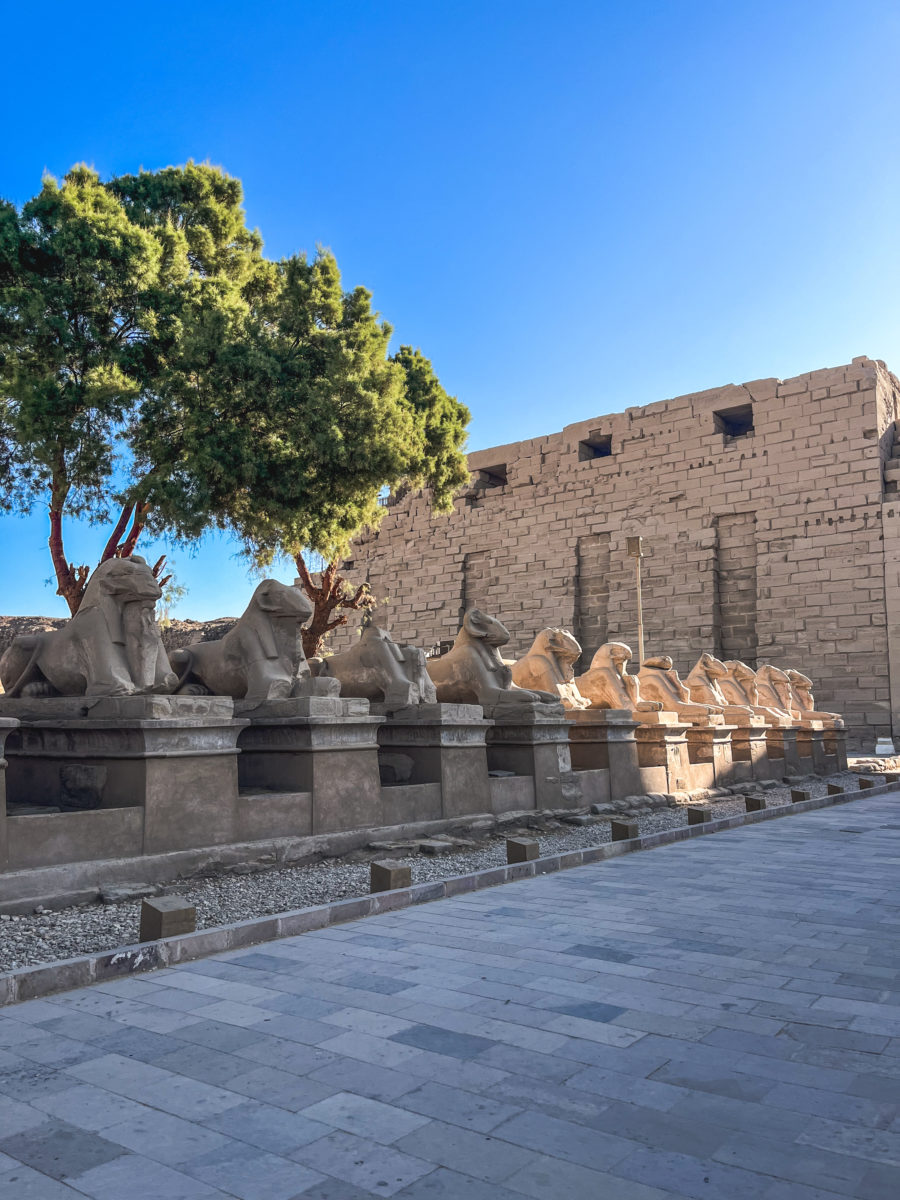
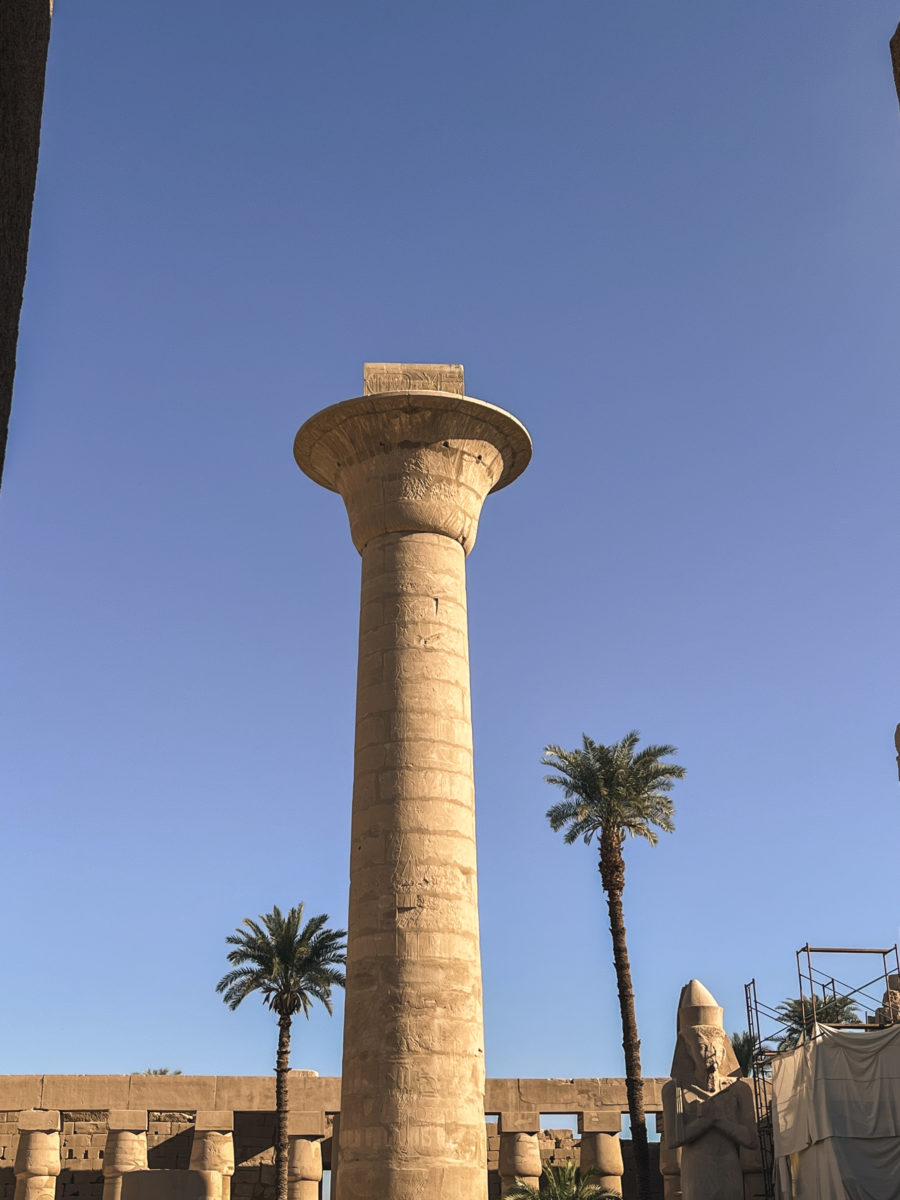
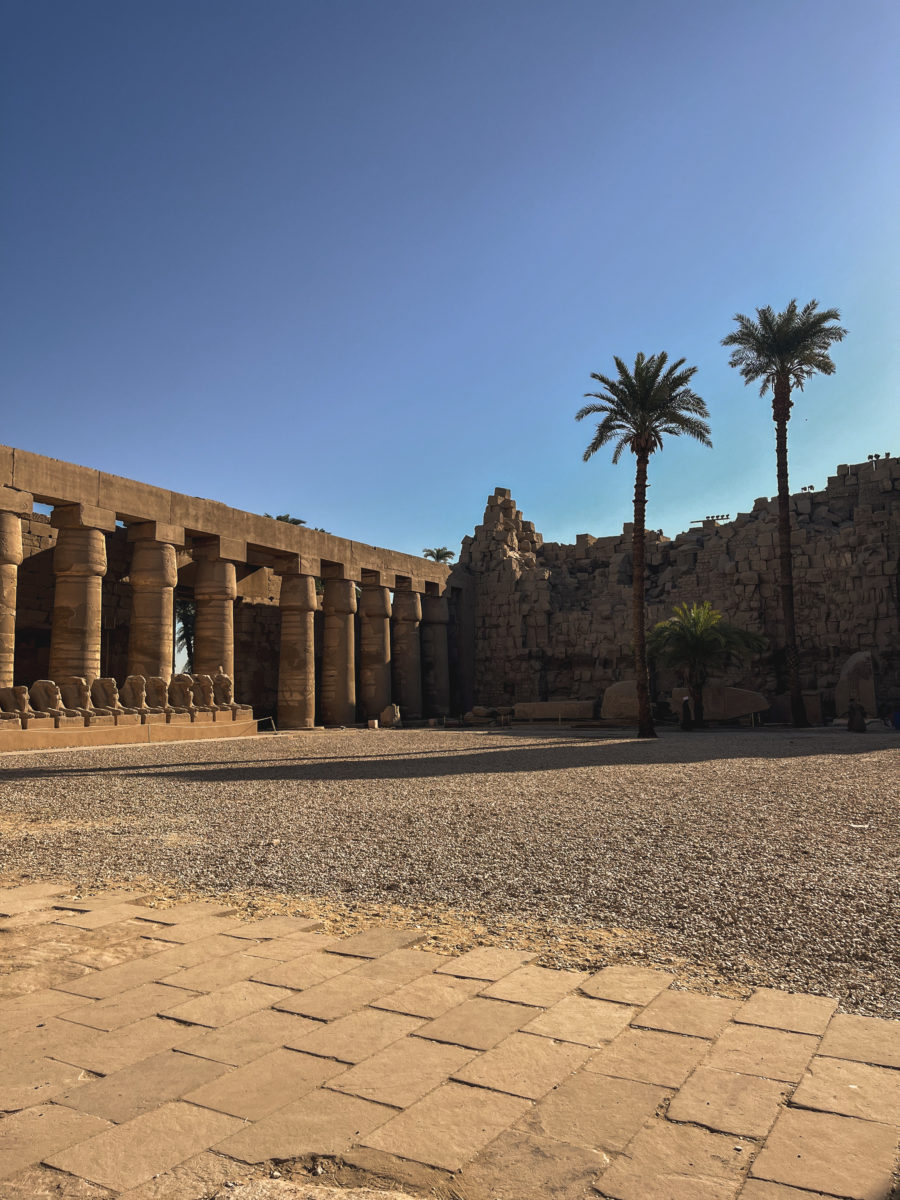
Karnak is not a single temple but an enormous religious complex, one of the largest ever built. It evolved over more than two millennia, from the Middle Kingdom of Egypt to the Greco-Roman period. Nearly every pharaoh sought to leave their mark here, adding pylons, statues, columns, obelisks… all dedicated to the Theban triad: Amun, Mut, and Khonsu. The site spans more than 100 hectares, though only a portion is open to visitors today.
But it was inside the great hypostyle hall that wonder truly took over. A forest of 134 massive columns rises like sacred tree trunks into the sky, some more than 20 meters tall, some so wide it would take several people linking arms to encircle them. Each one is carved with remarkably fine hieroglyphs: scenes of processions, royal names, offerings to the gods. Every centimeter feels carefully designed, sculpted, polished.
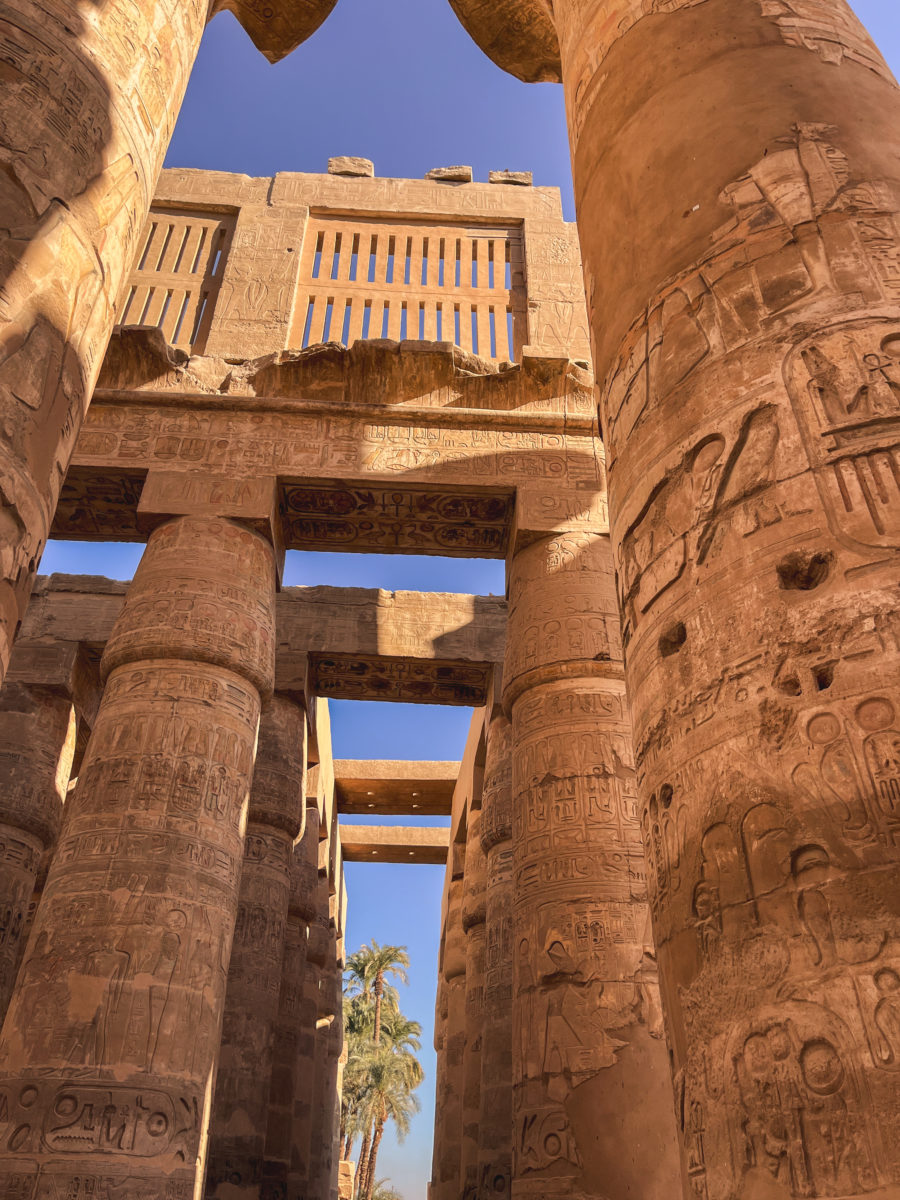
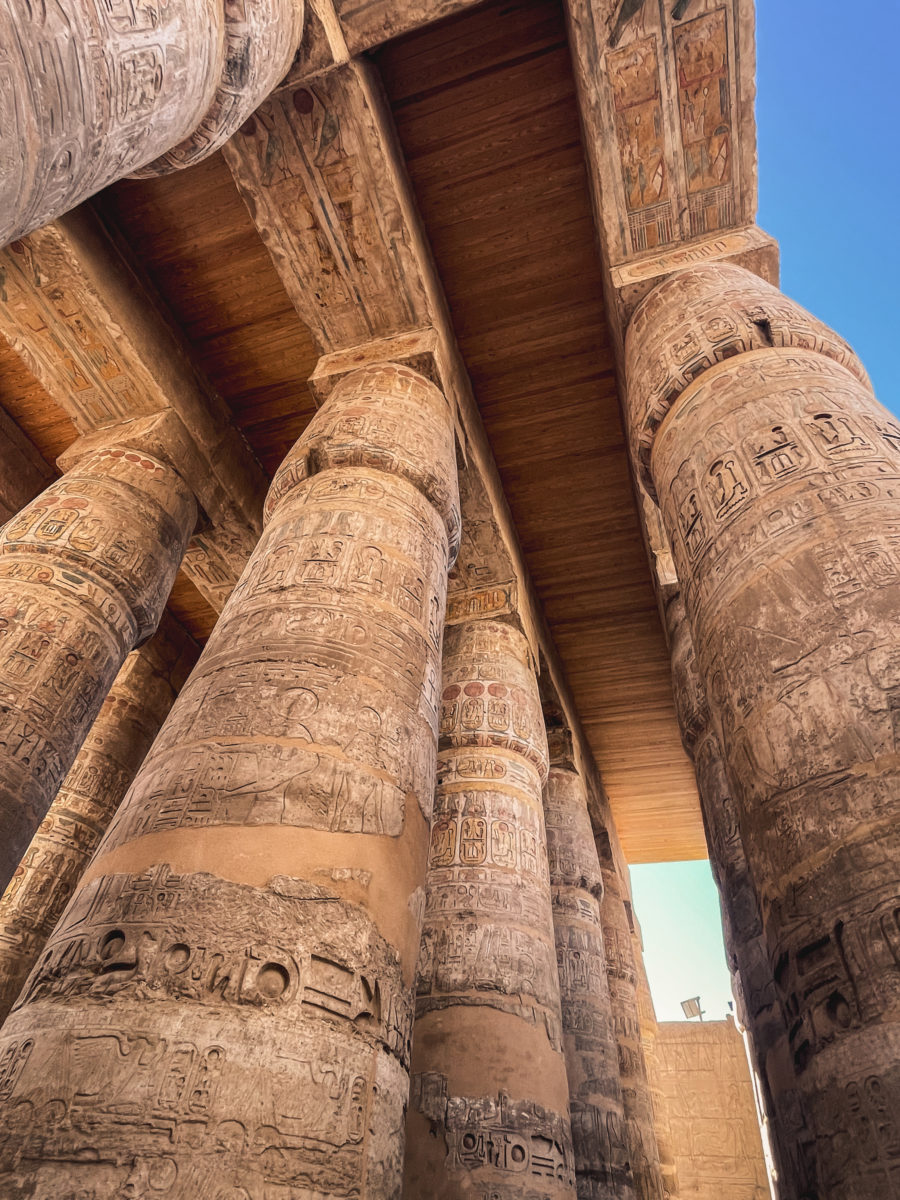
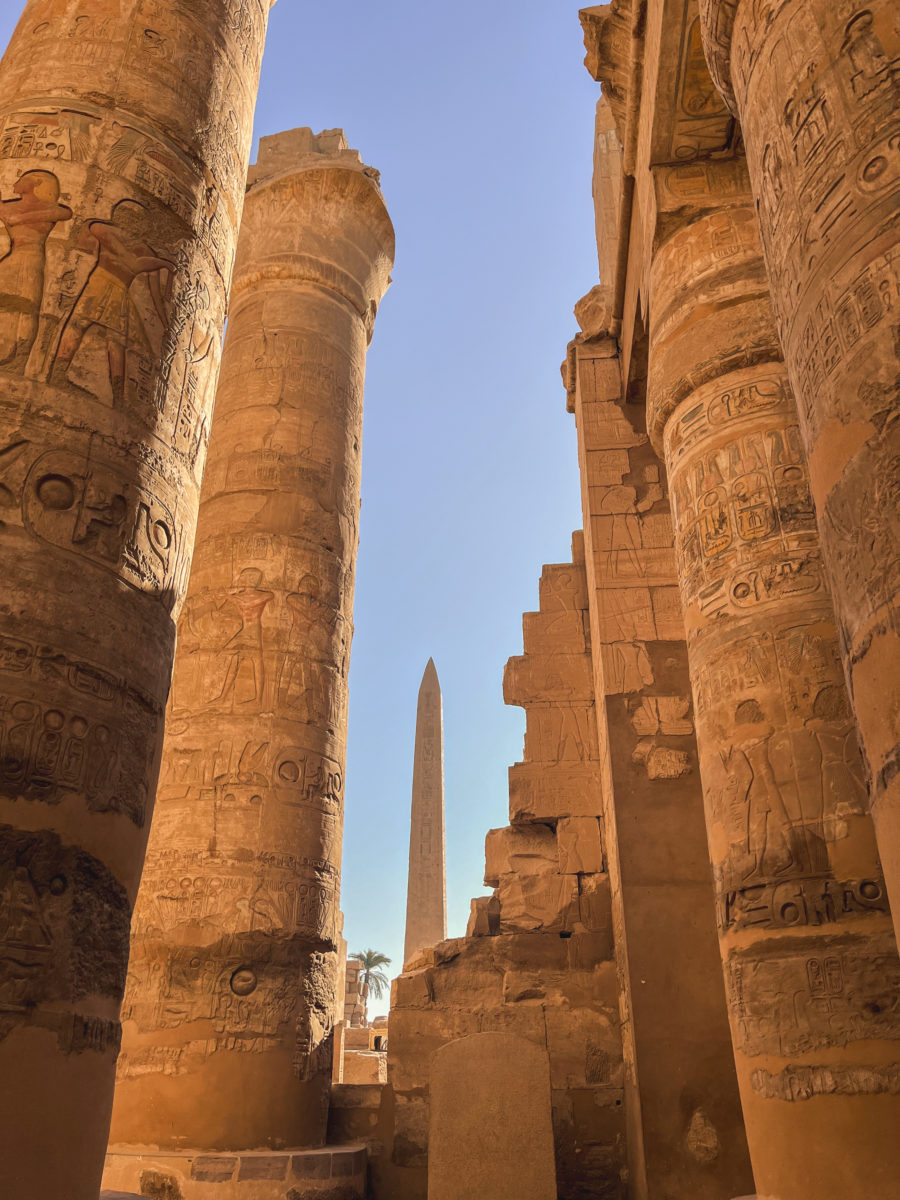
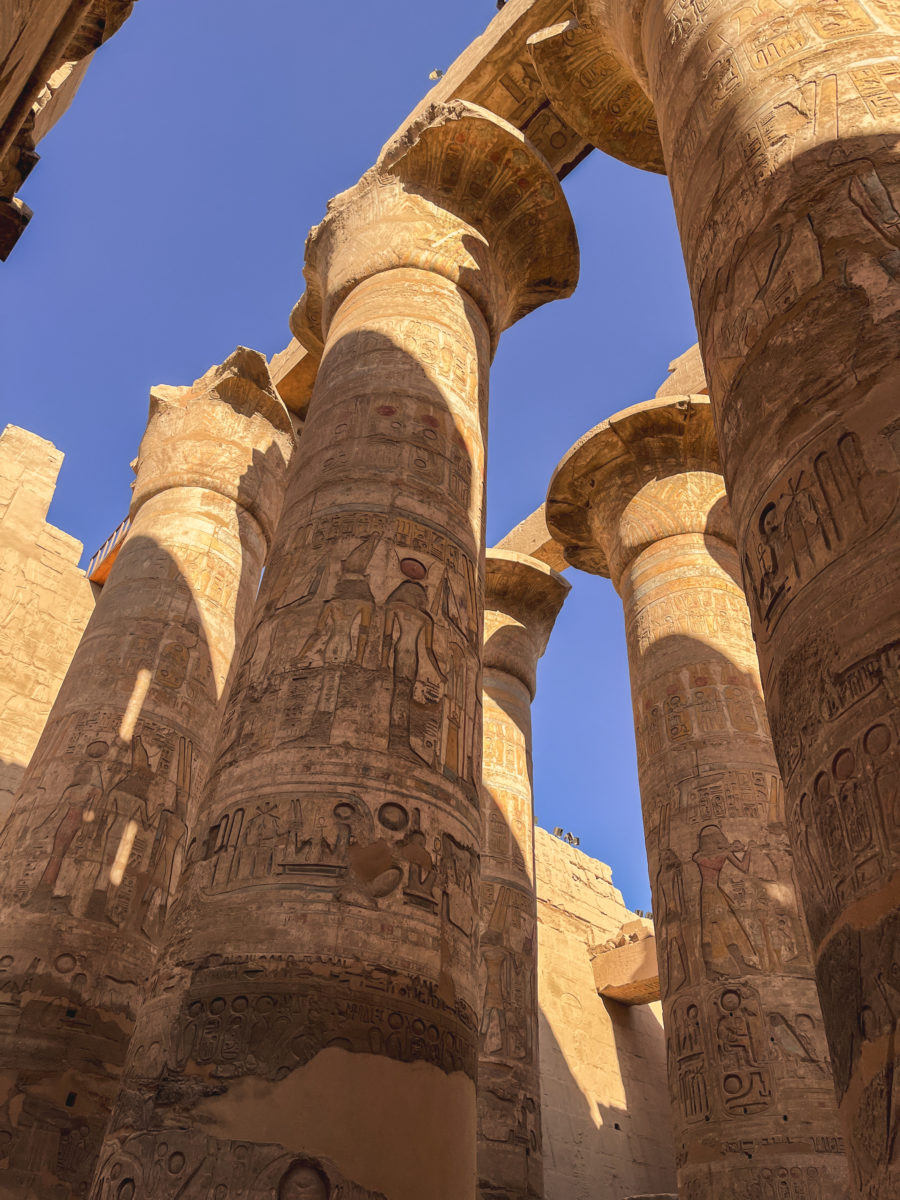
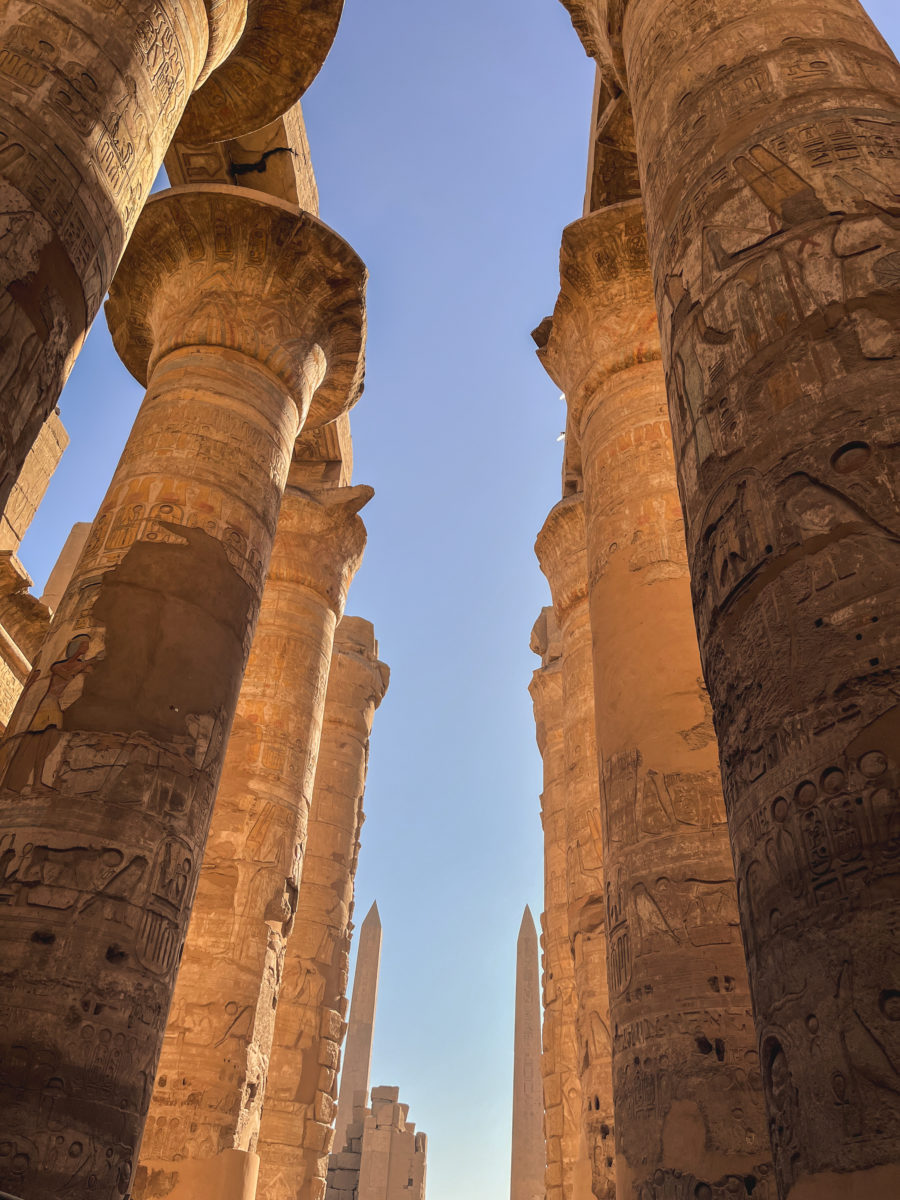
We found ourselves reaching out to touch the stone, tracing the outline of a symbol with our fingers, as if trying to absorb the gesture of the artisan who, more than three thousand years ago, worked there in the same sun-scorched silence.
There was a soft solemnity in the air, not only because of the overwhelming beauty of the place but because of a simple realization: this has been here since the days of mystery and technical brilliance. These columns, these carvings, these axes aligned with the stars – they’ve withstood time, war, wind, and sand to reach us. And we, two modern-day wanderers of the 21st century, stood in awe, walking between the shadows of the past.
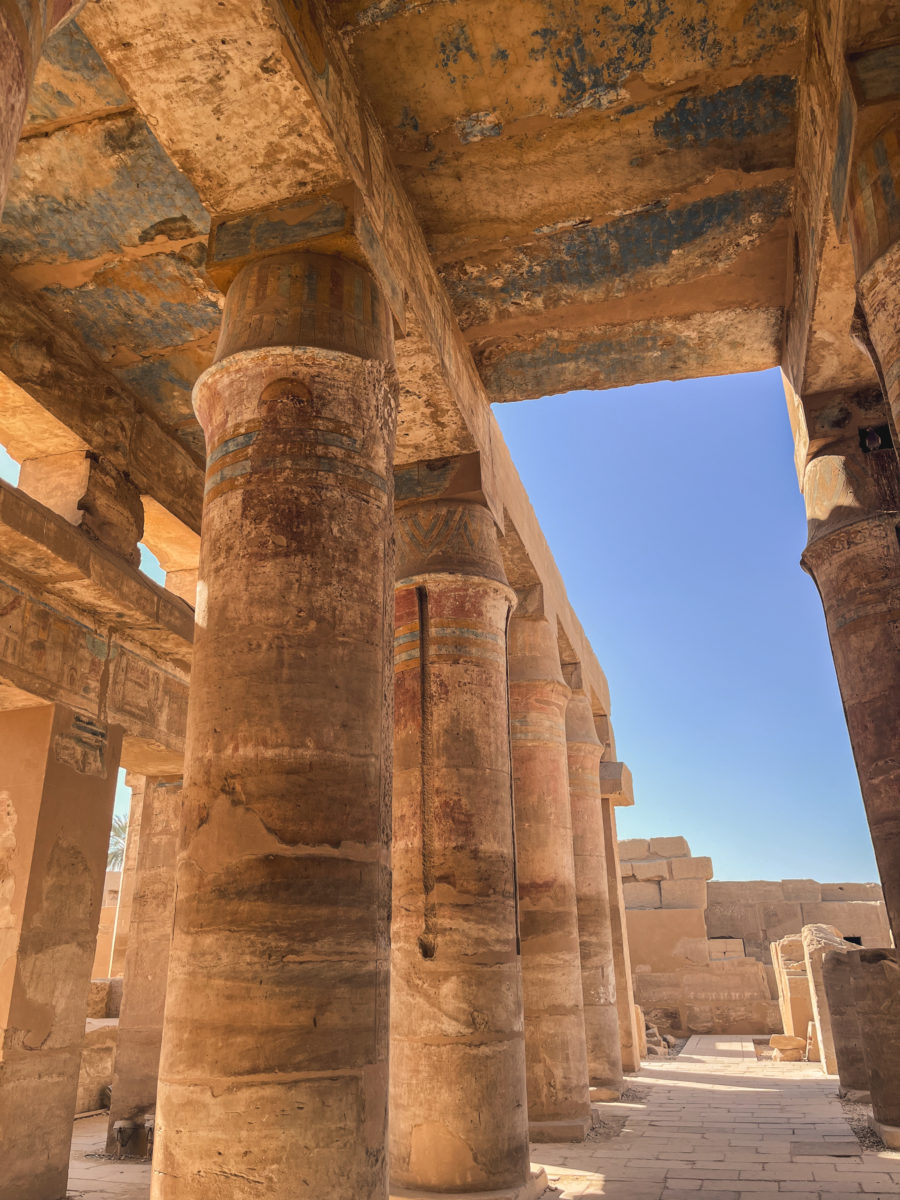
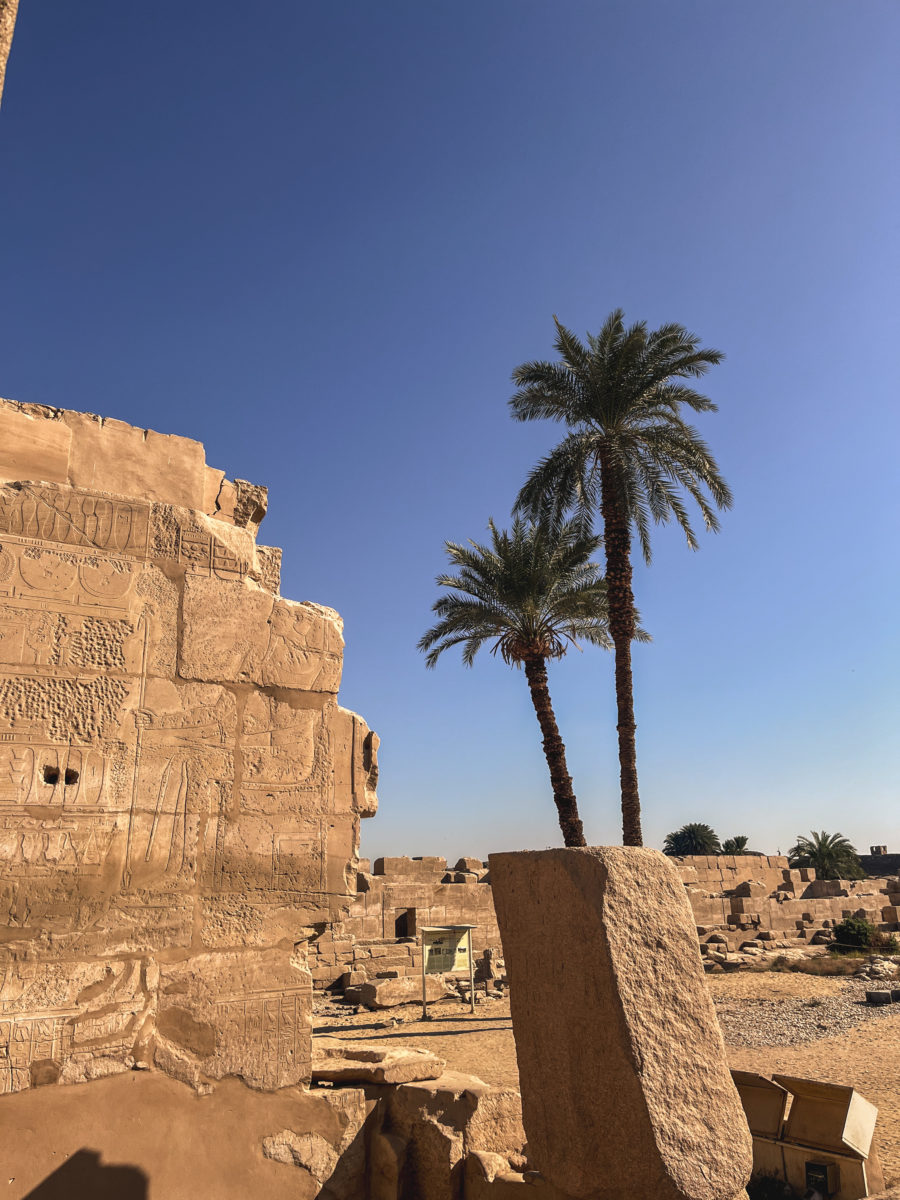
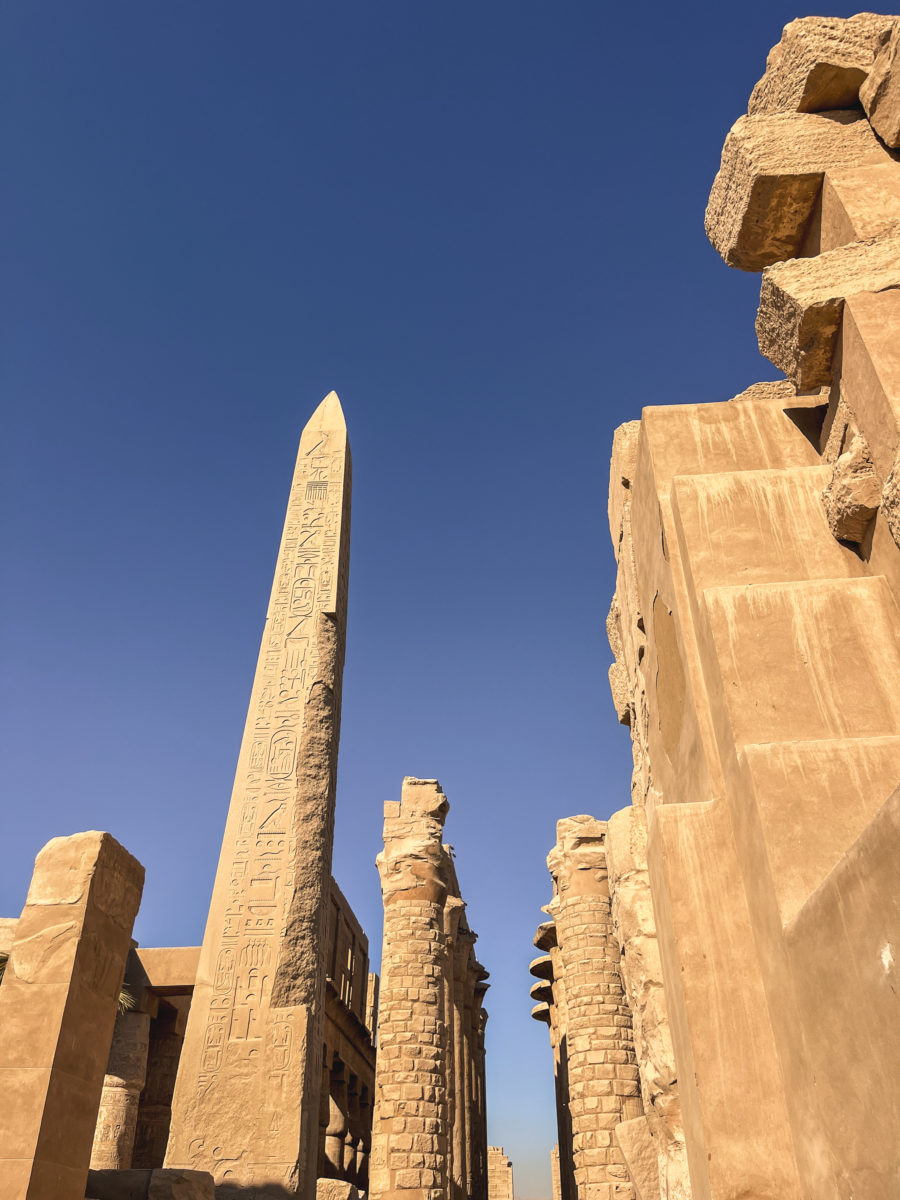
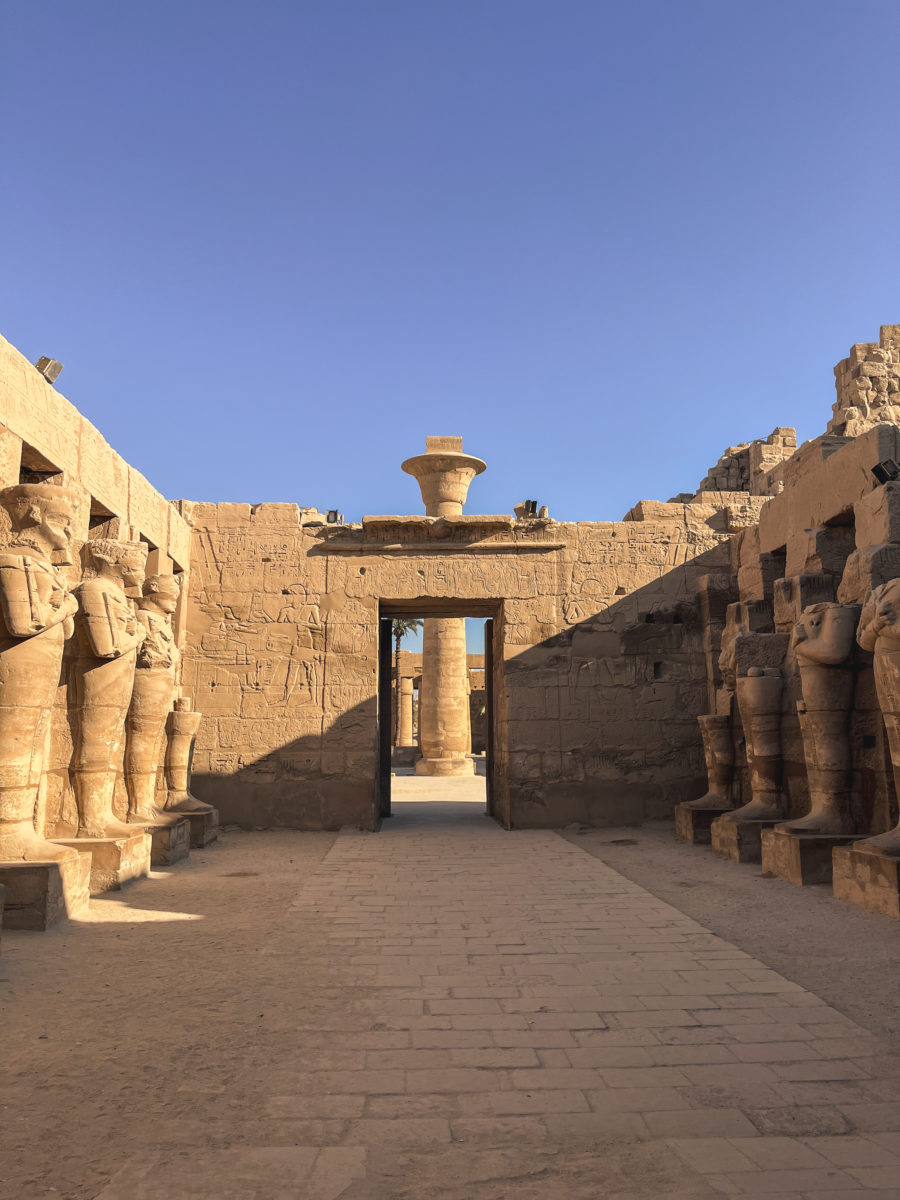
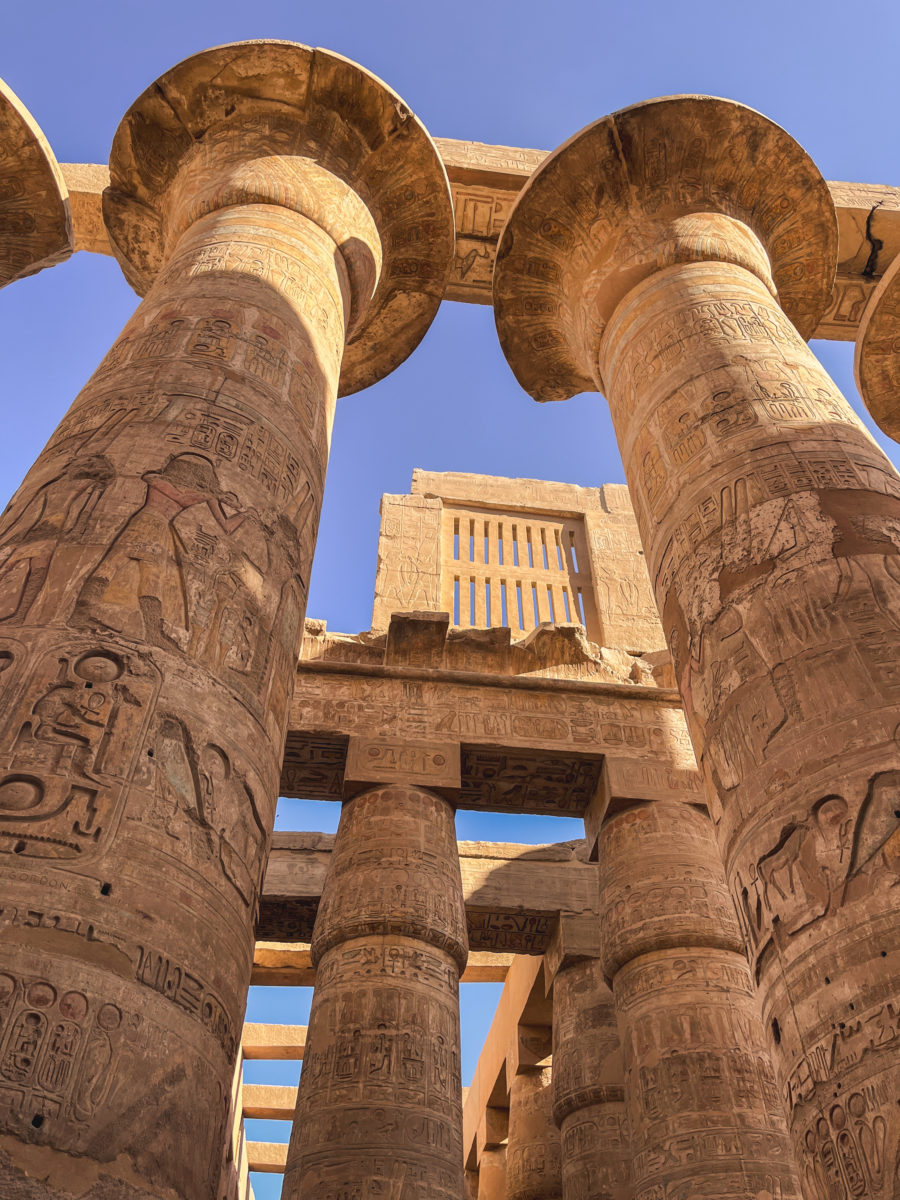
We took our time at Karnak. This wasn’t a place to rush or to check off a sightseeing list. No, we wanted to see everything. Every corner carried its own mystery, its own story. We wandered into the most hidden parts of the complex, even if it meant getting a bit lost in the maze of ruins or circling a pillar three times just to be sure we had not missed a detail.
The sun was already fierce that morning, an unrelenting heat, with no breeze to soften its grip. The stone held the warmth, and with each step, it felt like crossing an ancient oven. Still, we pushed through, determined, and even finished our visit by walking the 2.5 kilometers back into Luxor’s center.
Bring a hat, plenty of water, and good shoes. And if you can, start your visit right at opening time, like we did, to avoid the heavy crowds and the deafening afternoon heat.
The Temple of Luxor
After our in-depth visit of Karnak, we made our way to Luxor Temple, located a bit farther south, right on the edge of the Nile, in the very heart of the city. Unlike Karnak, tucked away in its own expansive space, Luxor Temple rises from within the bustle of modern life, a massive relic planted right in the present. The contrast is striking; you almost stumble upon it as the city gives way, suddenly, to the ancient.
We arrived in the middle of the afternoon. The sun was at its peak, the heat crushing, every step heavier than the last. Very quickly, I began to feel unwell. Fatigue, the heat, and the early signs of a good case of turista… it all blended together, and I struggled to keep pace. The temple, which I had been so eager to see, ended up feeling underwhelming. Perhaps it was exhaustion, perhaps it was just that, after the awe of Karnak, Luxor seemed more modest, less striking.
Built mainly under Amenhotep III and later expanded by Ramses II, the Temple of Luxor was dedicated to the god Amun, his consort Mut, and their son Khonsu. It was especially significant during the Opet Festival, when the divine statues were carried by boat from Karnak to Luxor. The Avenue of Sphinxes, partly restored today, still links the two sanctuaries.
Upon entering, you are greeted by two massive seated statues of Ramses II, timeless and impassive, guarding the temple like ancient sentinels. One obelisk still stands, its twin now resides in Paris. Inside, a well-preserved colonnade lines a broad courtyard, and farther in, a Roman-era chapel, built within the sanctuary itself, testifies to the site’s long history of reappropriation.
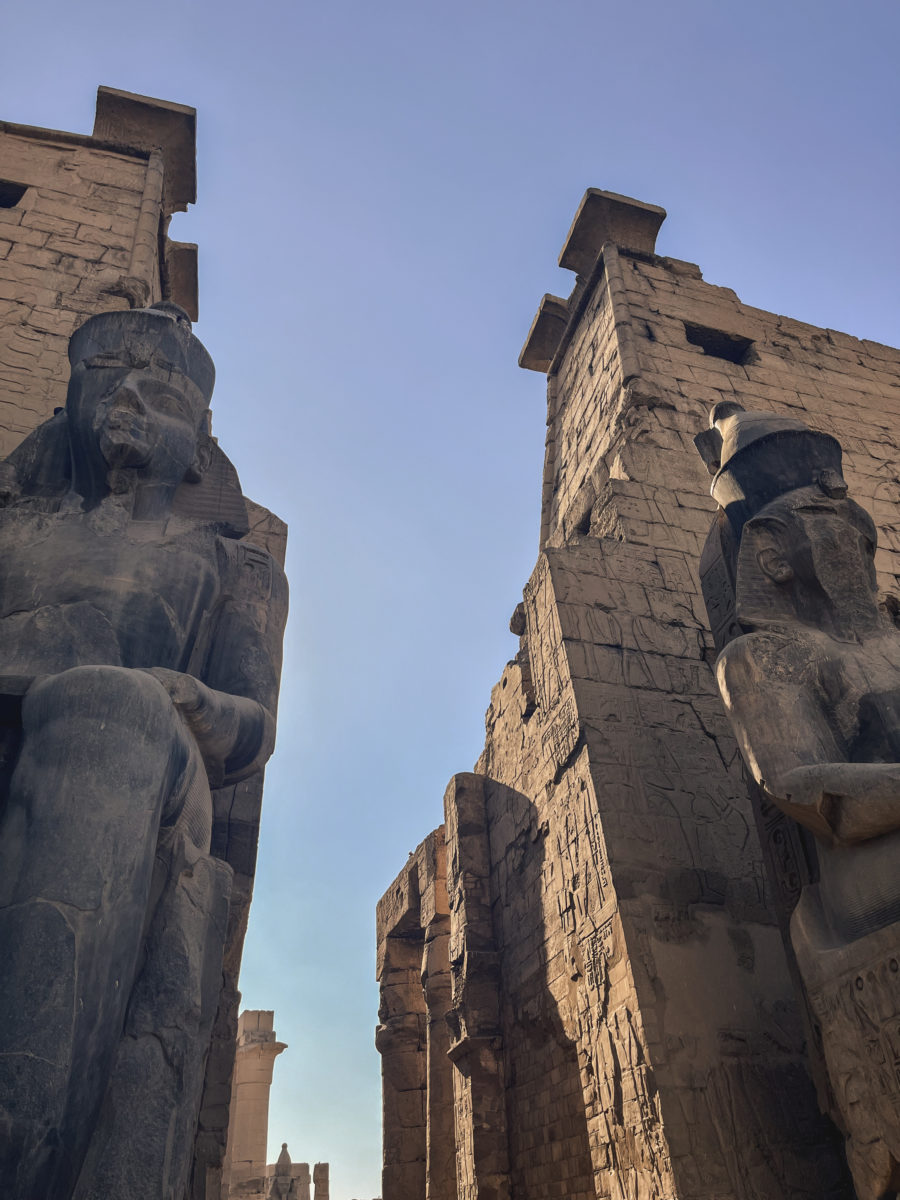
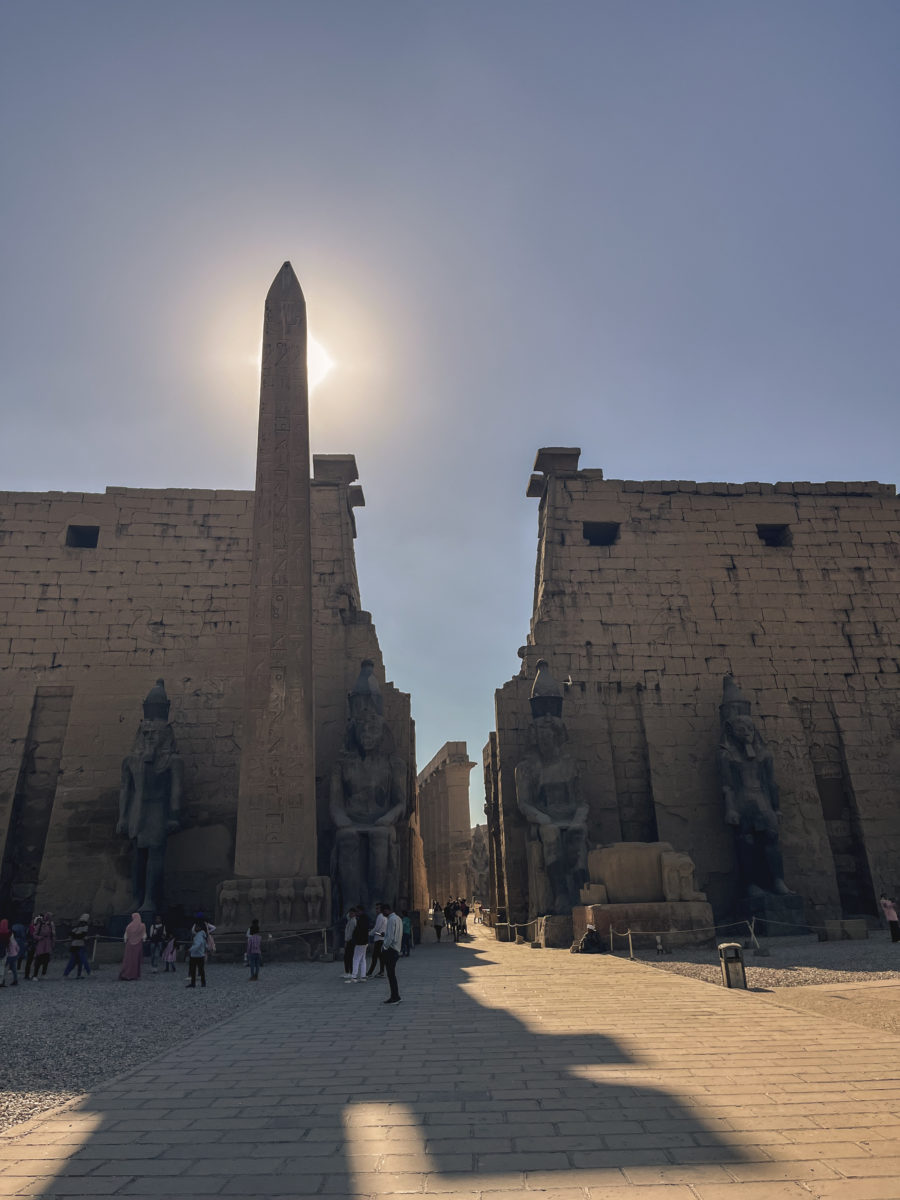
But that day, the mood was far from contemplative. Groups of local students on school trips filled the temple with their chatter and excitement. It was lively, yes, but also noisy and overwhelming. Quickly, we began to attract attention – two foreign women, alone, without a guide or chaperone. The glances came first, then the questions. And soon, the phones were out. Photos taken without asking, videos, laughter, whispers. A wave of curious attention, not necessarily hostile, but invasive and exhausting all the same.

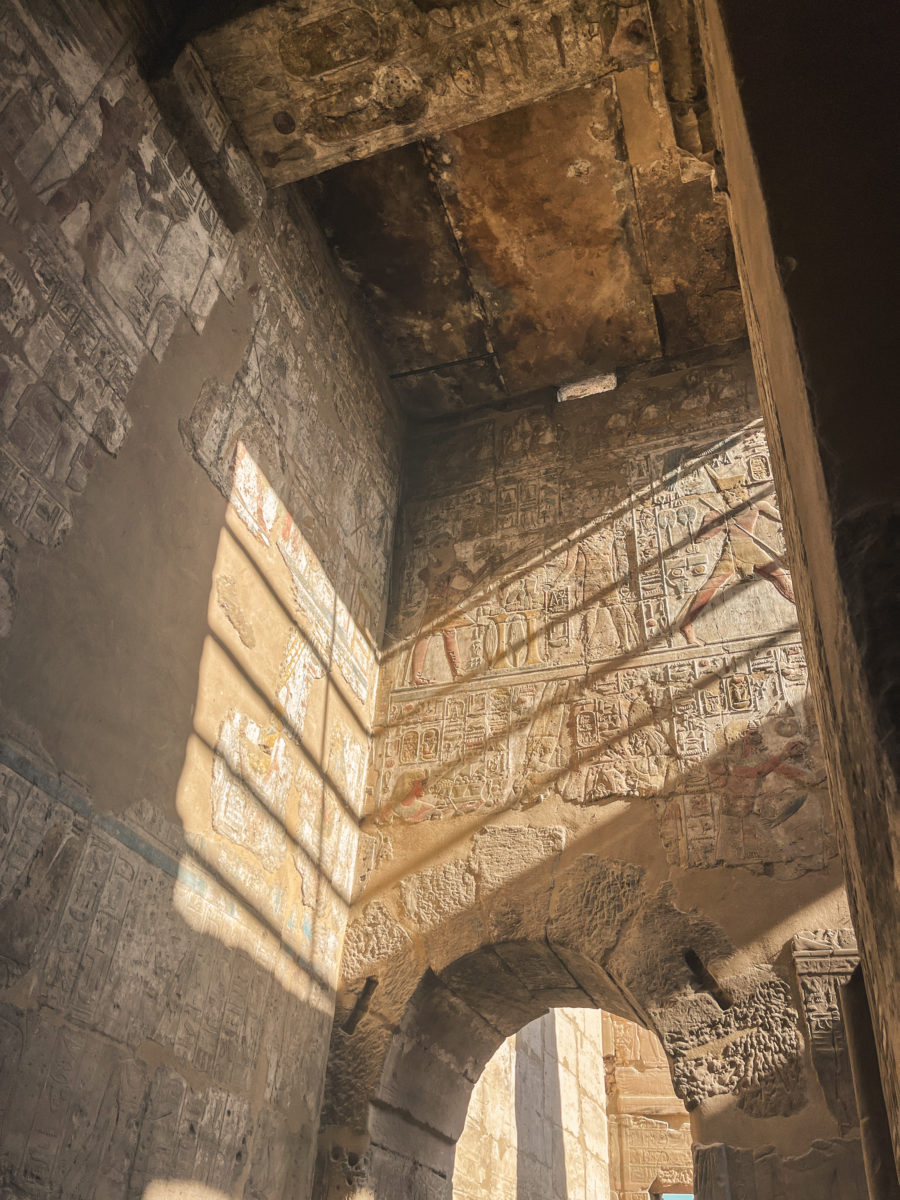
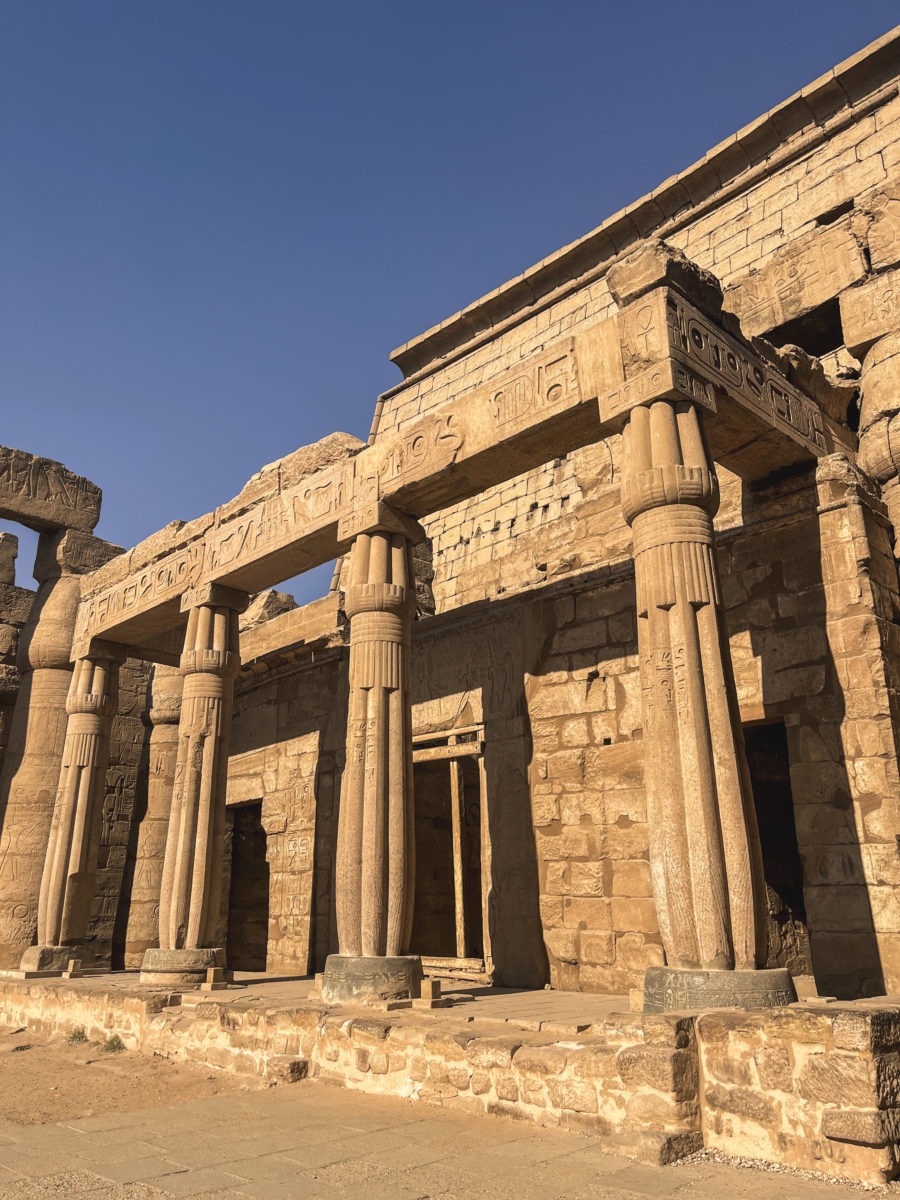
We cut the visit short. The site deserved more time, more quiet, but that day, it simply was not possible. As we left the temple behind, we also stepped away from yet another side of Luxor: a city where a glorious, ancient past rubs up against a noisy, pressing present.
Sailing the Nile
After our deep dive into Karnak’s ancient grandeur, we craved something lighter, a pause. So we gave in to one of Luxor’s quintessential experiences: a sail on the Nile.
Spontaneity here is rare; almost all the boats head toward the same destination, the so-called “Banana Island.” It had been vaguely recommended to us, but honestly, just floating on the Nile was reason enough.
We boarded a felucca (I nearly fell into the river), one of those traditional wooden sailboats that glide gently along, carried by the wind, no engine, no noise, just the soft slap of water against the hull and the creak of the sail above. The journey itself was the real experience.
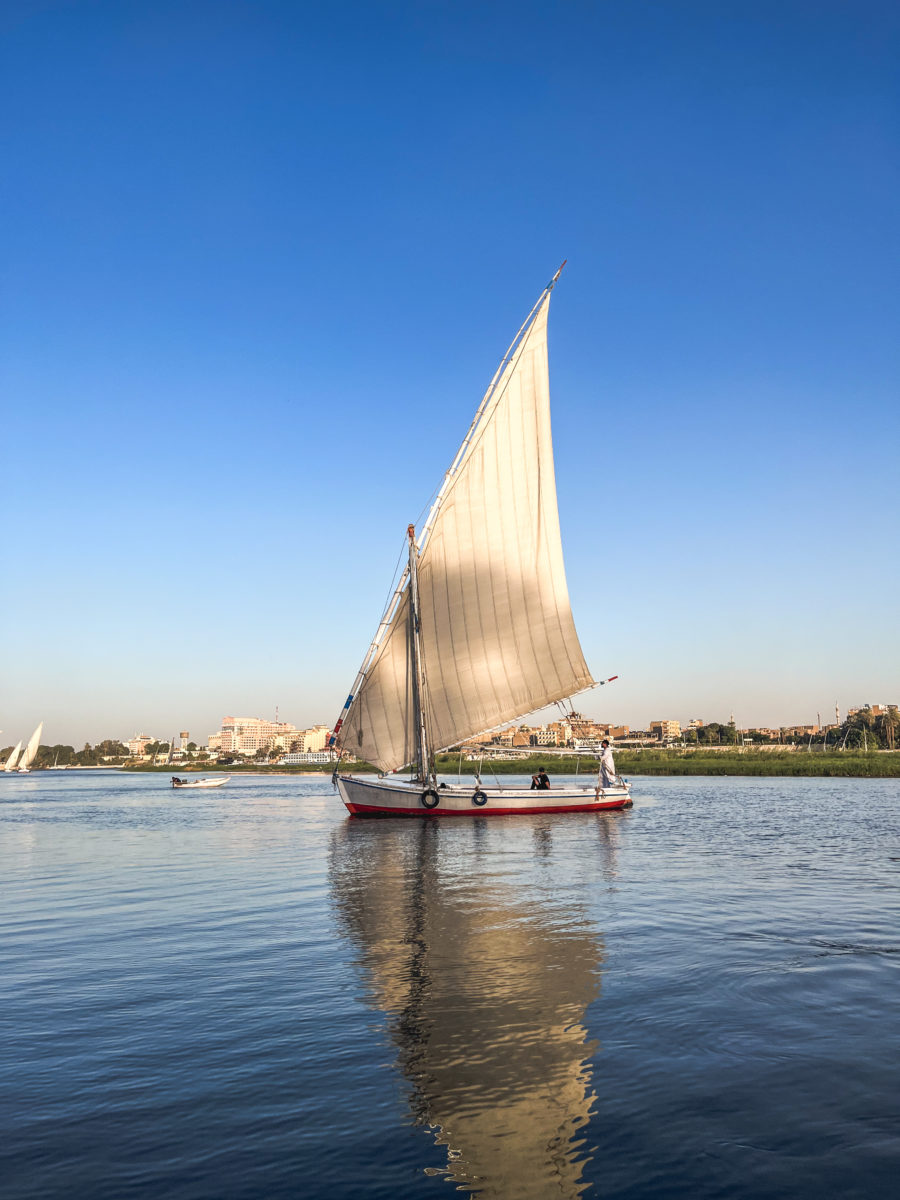
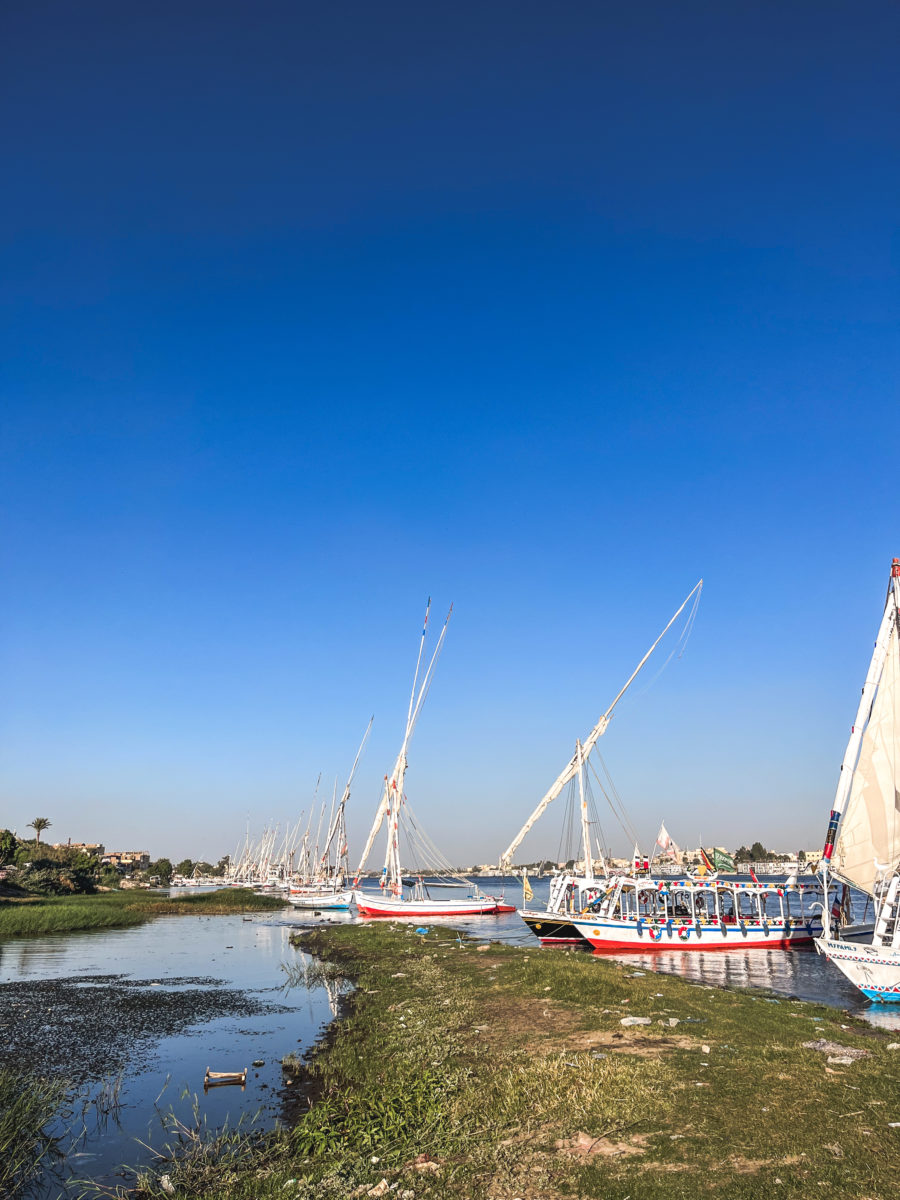
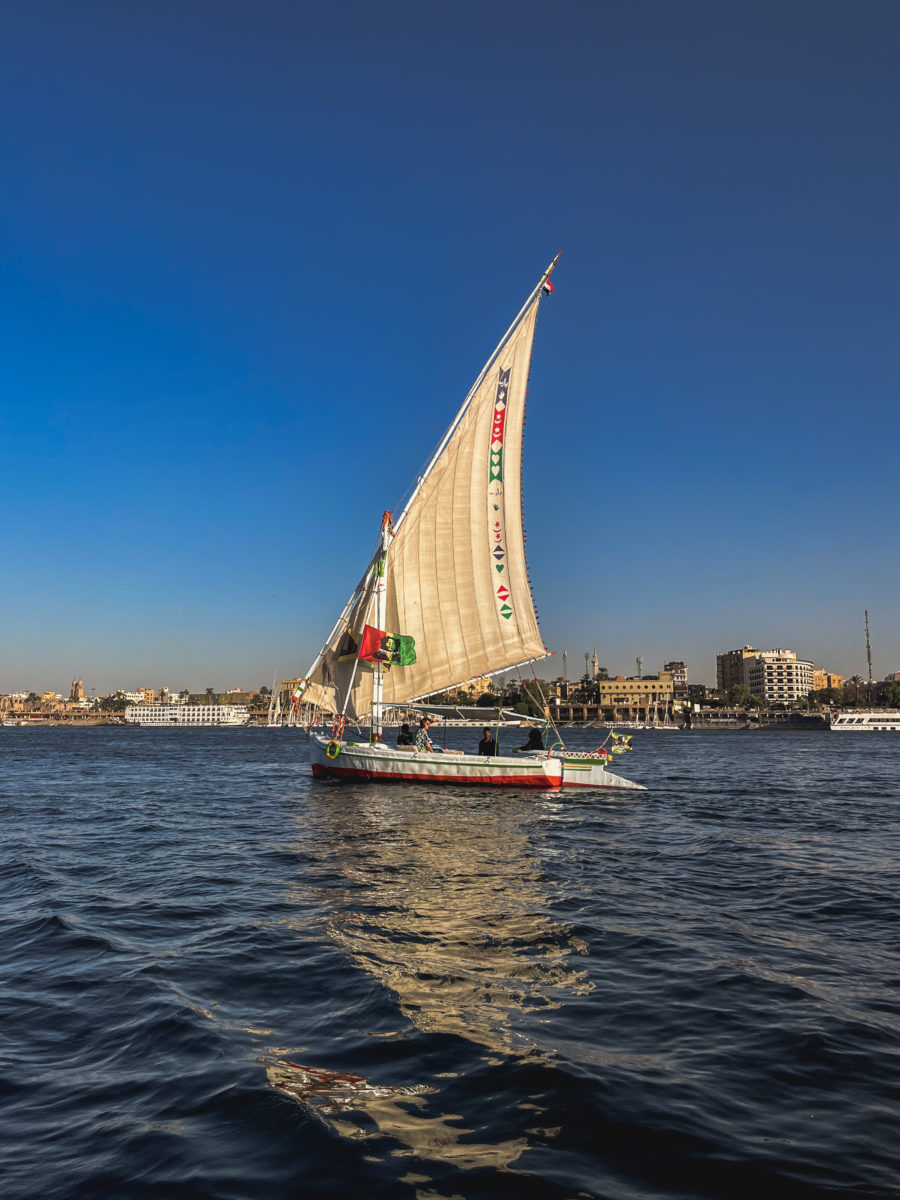
Drifting like that, feeling the warm breeze on our skin, watching the banks slide by… it was serene, radiant, almost meditative. A suspended moment in our journey.

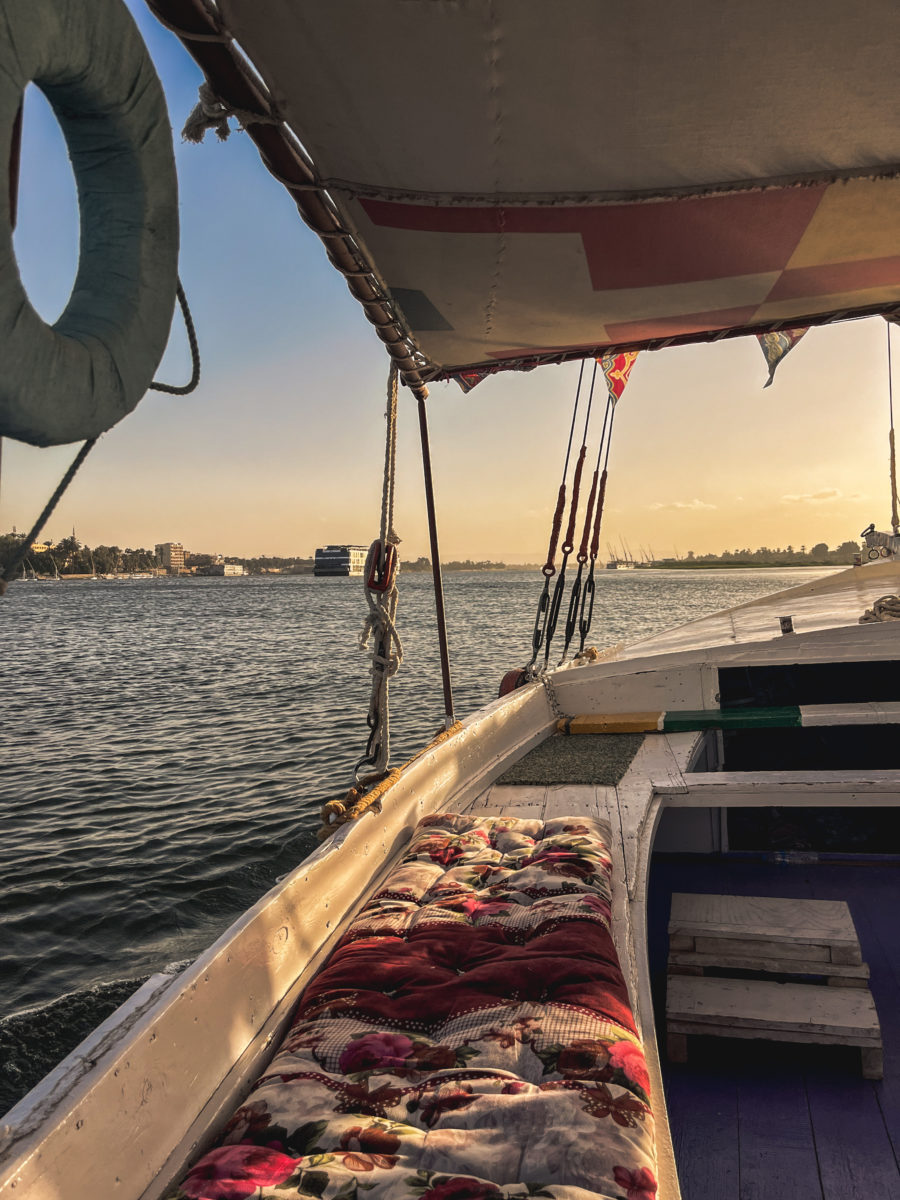
As for Banana Island? Let’s be honest: it is a tourist trap. A handful of banana trees, a few drinks offered in the shade, and sadly, caged animals, a sight that immediately turned me away in protest. The supposed “authenticity” felt fabricated, staged for visitors. Nothing worth going out of your way for.
What stayed with us was the slow voyage, skimming over the river. The feeling of floating between two banks of history, between sky and Nile, on a boat whose silhouette has not changed for centuries. The silence, the golden afternoon light and that simple feeling of being exactly where we needed to be, without having to do anything more.
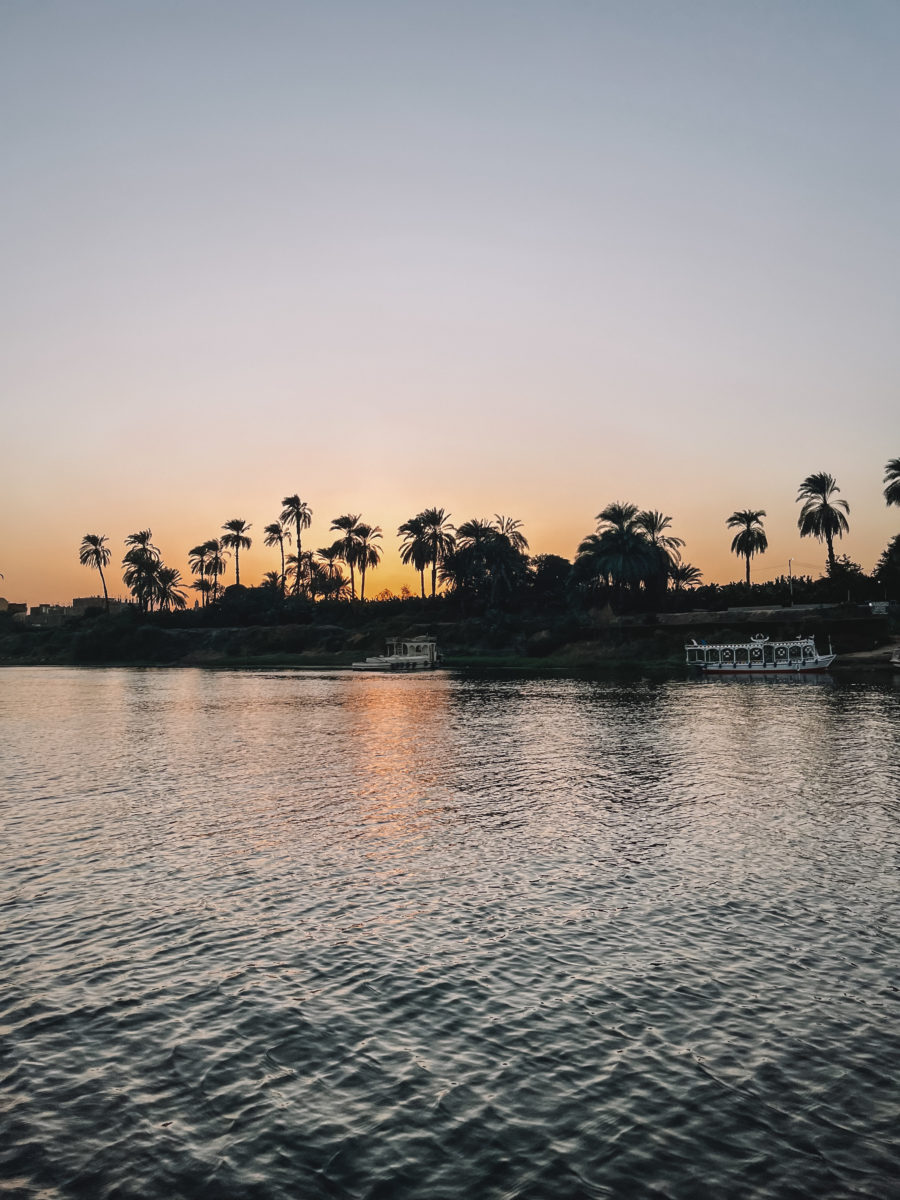

Luxor’s East Bank is a living tapestry of the past and present. From the solemn majesty of Karnak to the vibrant chaos around Luxor Temple, it invites you to walk through time. And when the history gets heavy, the Nile offers just enough breeze to carry you gently back to yourself.

